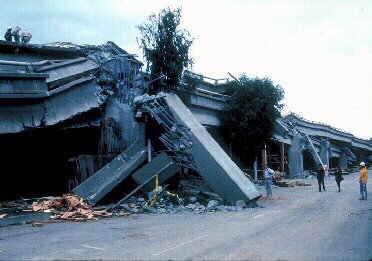Another green tale is derailed
Milwaukee Journal May. 11, 2008
Does Mother Earth really want Milwaukee to build light rail? Maybe not.
Rail backers lay out lots of reasons, none yet convincing, for why we should spend a billion bucks to install trains. Their trump is the environment - that it is rail alone, and not buses in whatever form, that uses energy efficiently and emits less carbon.
Only that's not true. Light rail in practice uses about as much energy to move a passenger a mile as does your average car, reports transit expert Randal O'Toole of the Cato Institute, the libertarian think tank. When it comes to carbon dioxide per passenger mile, light rail beats the average car only in some cities - mainly where electricity doesn't come from coal or oil. Nearly everywhere, you put out less carbon by driving a Prius than by taking the train.
This isn't what most people expect. Still, O'Toole, a longtime critic of light rail, confined himself to data from federal transit and energy agencies. When I checked with head researcher Steven Polzin at the transit-friendly National Center for Transit Research, he said the numbers were good and the conclusion true. Most people assume rail is far more efficient, "but the empirical data isn't very compelling," he said.
Two trends are at work, says Polzin. Even as car mileage has been rising, by about 1.5% a year, light rail has not been getting more efficient, "mainly because we made it bigger and nicer." The vehicles grow heavier, air conditioning better, lighting brighter, the station's got an escalator - it adds up.
If you fill the trains, per-passenger energy use is lower, but, says Polzin, the average load per railcar has fallen in the long run as rail expands to more marginal markets. The share of commuters taking public transportation has fallen in 20 of 25 cities since the installation of light rail or, for older systems, since 1970, say federal figures. Most of those lured by trains came off buses, not out of cars.
The upshot, says O'Toole, is that while light rail puts out about 0.36 pounds of carbon dioxide per passenger mile - and more than a pound a mile in Baltimore, Pittsburgh or Cleveland - a hybrid Prius puts out 0.26.
Minneapolis actually did lower carbon emissions with its light rail line, saving 16 million pounds of carbon dioxide when passengers switched from buses. It's also saving millions more by replacing old buses with hybrid-electrics. But while light rail cut carbon at a cost of $2.20 a pound, says O'Toole, buses did it for 60 cents.
Cost counts. If you really want more people to ride, you have to make their wait shorter and their trip faster. "Riders are not sensitive to steel wheels or rubber tires," he says. "They're sensitive to frequency and speed." Spend less than the $83 million a mile that Minneapolis' planned second line will cost and you can afford more frequent service. For most places, says O'Toole, you do better if you buy buses, especially smaller, cheaper ones.
This is what's on the table in Milwaukee - bus rapid transit, in which hybrids run frequent service on reserved lanes with few stops. Other cities have installed it for about $1 million a mile.
It's also got a big efficiency advantage, Polzin notes: Because buses have a much shorter lifespan than railcars - 12 years vs. 40 - and because hybrid technology means they're becoming more efficient, you're more likely to be riding on something clean. With rail, newer technology means you have to replace the whole system. With buses, you can start buying, say, fuel-cell vehicles the moment they come out.
Which counts if your aim is cleaner air. All it lacks is that indefinable panache of riding rails or paying extortionate transit taxes. Buses, even rapid, hybrid ones, by comparison seem plebian, almost as much as O'Toole's other suggestion for cleaner air: fixing road bottlenecks and timing traffic signals so cars carrying the other 98% of us don't waste time flatulating in traffic jams.
It doesn't feel as green. But what counts, feelings or facts?
The phrase,'Unsound Transit', was coined by the Wall Street Journal to describe Seattle where,"Light Rail Madness eats billions that could otherwise be devoted to truly efficient transportation technologies." The Puget Sound's traffic congestion is a growing cancer on the region's prosperity. This website, captures news and expert opinion about ways to address the crisis. This is not a blog, but a knowledge base, which collects the best articles and presents them in a searchable format. My goal is to arm residents with knowledge so they can champion fact-based, rather than emotional, solutions.
Transportation
Thursday, November 20, 2008
The Myth of Light Rail being Green
The articles are posted solely for educational purposes to raise awareness of transportation issues. I claim no authorship, nor do I profit from this website. Where known, all original authors and/or source publisher have been noted in the post. As this is a knowledge base, rather than a blog, I have reproduced the articles in full to allow for complete reader understanding and allow for comprehensive text searching...see custom google search engine at the top of the page. If you have concerns about the inclusion of a specific article, please email bbdc1@live.com. for a speedy resolution.









